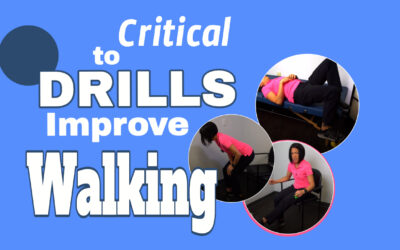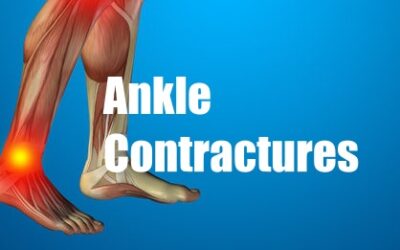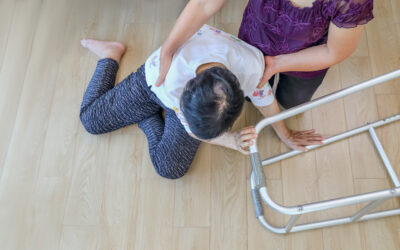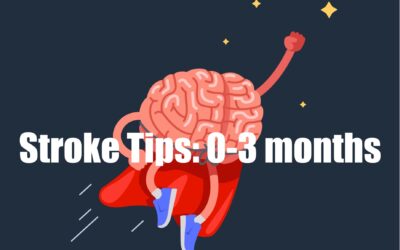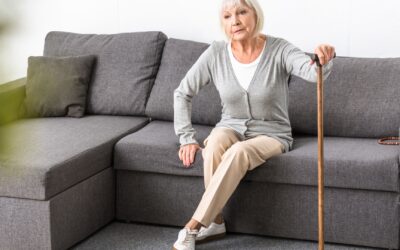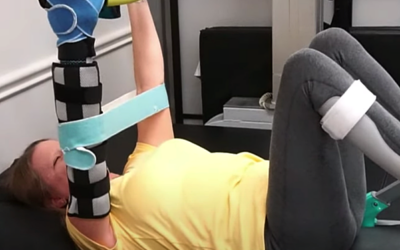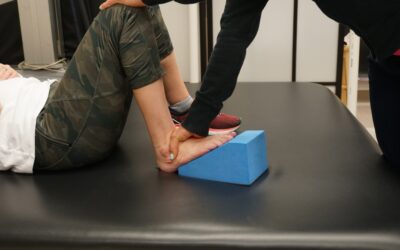The Missing Link in Stroke Rehab: Why Strength Isn’t Enough
How Plyometric Exercises Can Improve Your Post-Stroke Walking
Recovering from a stroke is a journey that takes patience, effort, and persistence. Maybe you’ve been faithfully following your rehab plan—doing strength training, stretching, and walking drills
You might be hitting milestones in therapy, like improving walking speed and distance, but something still feels off. You may still feel a lack of confidence, especially when facing uneven surfaces, crowded spaces, or unfamiliar surroundings.
If this resonates with you, let’s talk about what might be missing from your recovery plan: plyometric exercises.
What Happens After a Stroke
After a stroke, it’s common to lose strength in one side of your body. But what many people don’t realize is that stroke impacts more than just strength.
That makes sense — weakness is often the most visible deficit. You might think, “If I just keep building strength, I’ll get back to normal.”
But here’s the truth: Strength is just one piece of the puzzle. What’s often overlooked is that your muscles do a lot more than contract. There’s coordination, muscle timing, power, and reflexive responses involved in nearly every movement — from stepping over a curb to reacting when you trip. That’s why you may still feel unsteady, even after regaining some strength.
So, What Are Plyometrics? 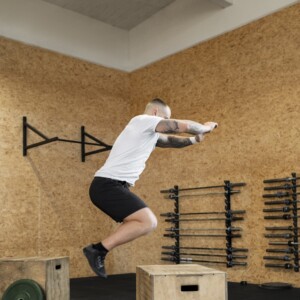
Plyometric exercises train muscles to contract quickly after being stretched. This is known as the stretch-shortening cycle. Think of a rubber band: when you stretch it and let it go, it snaps back fast. That’s what we want our muscles to do!
In real life, this ability helps you react quickly and efficiently — like catching yourself from falling or adjusting to uneven ground — without overthinking.
Plyometrics are often used with elite athletes to build power, coordination, and injury resilience. Now, they’re being explored more in older adults to reduce fall risk. Yet in stroke rehab, they’re still largely missing — and that’s a problem.
Why Plyometrics Are Often Left Out of Stroke Rehab
There are a few reasons:
- Limited research: There’s still very little formal evidence on the use of plyometrics after stroke, especially for those with significant mobility impairments.
- Limiting beliefs in healthcare: Many therapists assume their patients can’t do these exercises, so they don’t even try.
- Misinterpretation of studies: Some studies labeled as “plyometric” actually just used fast sit-to-stands — which aren’t true plyometric movements.
Despite the lack of published evidence, clinical experience and anecdotal success show that these exercises can dramatically improve balance, confidence, and real-world function in stroke survivors — when used appropriately.
How to Safely Introduce Plyometrics After Stroke
If you’re thinking, “There’s no way I could jump or bounce,” don’t worry — there are many ways to scale plyometric movements to fit your current ability level.
Here are a few ideas:
1. TheraBand Recoil Drill
Attach a resistance band above your leg. Let it pull your leg upward, then push it down fast. This mimics the quick stretch/shortening cycle without putting weight on the leg.
2. Mini Trampoline Oscillations
With support (like parallel bars or a therapist), stand on a mini trampoline and gently bounce up and down — not jumping, just allowing your knees and ankles to absorb and release energy. This teaches coordination between the ankle, knee, and hip.
3. Assisted Pogo Jumps
Using a TheraBand for support, perform small jumps in place. You can start double-legged, then progress to staggered or single-leg positions for more challenge.
These movements not only improve muscle reaction time and coordination, but they also help rebuild the synergies between muscles — making movement more automatic and efficient.
⚠️ Important Note: Always do these exercises under the guidance of a trained therapist who understands how to scale movement based on your current mobility. Safety comes first.
Do You Need a Neurologic Physical Therapist?
Not necessarily.
In fact, some orthopedic physical therapists — especially those experienced with athletes or diverse age groups — may be more open to incorporating creative approaches like plyometrics. The key is finding someone willing to think outside the box and tailor therapy to your goals and abilities.
One Frustrating Example From Research
I recently found a 2025 study that seemed to confirm everything I’ve seen in practice. The conclusion supported the benefits of plyometrics in stroke recovery. Excited, I dove into the full article…
Only to find that the intervention wasn’t plyometric at all — it was just fast sit-to-stands. That’s not the same as tapping into the stretch-shortening cycle.
This highlights a bigger issue: Even peer-reviewed studies can miss the mark, and clinicians (and patients) often rely on conclusions without digging into the details.
Moral of the story: Ask for sources. Read studies for yourself. Understand whether the intervention tested applies to your situation.
Final Thoughts
Here are the 2 key takeaways:
- Plyometric exercises could be a critical missing link in stroke rehab — helping you move with more confidence, react faster, and reduce your fall risk.
- Your therapist’s beliefs matter. Don’t be afraid to ask questions, challenge assumptions, and seek care that aligns with your goals.
You have more potential than you’ve been told.
If you’ve had success (or struggles) with integrating advanced exercises like these into your rehab, I’d love to hear about it. Share your experience in the comments below — let’s build a stronger, more informed rehab community together.
Articles you may be interested in
Walking Exercises for Stroke Patients
Many people inquire about the "best exercises" for stroke patients to improve walking. I like to use the term "Drills" when referring to "stroke exercises". Why? Because "Drills" are what I think of when I think of repetitive movement. Case and point, drills are...
Ankle Contractures: Best and worst treatments
One of many problems when the neurologic system is damaged are ankle contractures. A contracture is where the soft tissue structures surrounding a joint shorten causing loss of movement. What Causes a Contracture? There are several factors that can lead to an ankle...
Fix your fear of falling
Balance (also known as postural stability) is dramatically impacted when there is damage to the neurologic system and can increase the fear of falling. It is the one ability most of us (adult humans) take for granted……..until it is gone. Lack of postural stability...
Stroke: Critical Tips (0-3 months)
Stroke survivors often suffer from a myriad of complications after their stroke. In an effort to help you get the most out of your rehab (and reach your maximum potential) there are some critical tips and/or “foundational” points of emphasis. Things you didn't...
Parkinson’s Disease: Managing Depression
Depression is common problem associated with Parkinson's disease (PD) and can affect all aspects of your life. In fact, it is estimated that approx. 40-50% of those diagnosed with PD experience depression. Depression is a serious mental illness that causes severe...
Multiple Sclerosis: How much exercise is enough?
It seems almost every other week there is some new study on the benefits of exercise and how it can help prevent conditions like diabetes, heart disease, and depression. But what about multiple sclerosis? The national MS society reports that 1 million people are...
Equipment for Stroke Arm Exercises
Products For a Spastic Arm Having the right tools for stroke arm rehabilitation is critical. Especially for those who have spasticity. Spasticity is an involuntary muscle contraction caused by damage to the brain and/or spinal cord. In the arm it can cause...
Foam Wedges: For positioning and more
Positioning/Stretching Foam Wedge This wedge is made of dense foam with a rubber base to keep it from sliding. Uses: It can be used to position the pelvis. It can be placed under the thigh in sitting to stop the leg from rotating outward. It can be used for bridging...
Clonus: Causes and Treatment
Clonus is an involuntary, rhythmic muscle contraction followed by a relaxation. It is a sign that there is damage to the brain and/or the spinal cord (upper motor neuron). More specifically, the part of the nervous system that controls movement (descending motor...
Rolling with the punches after a Stroke
Why do some people seem to “thrive” in the midst of life’s challenges? You know the type. Or maybe you don’t. To understand what I mean, you need to be a “people analyzer”. You see, I AM a “people analyzer”. I love to know what makes people tick. Especially when it...


